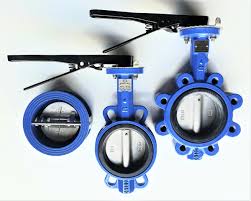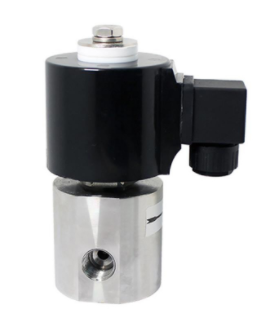High Performance Wafer/Lug Type Butterfly Valves

The Application of Lug Type Butterfly Valves
Introducing Cameron’s expertise in fluid control solutions, our Lug Type Butterfly Valves are integral components in various industries. Also known as butterfly valve lug type, they offer reliable flow control and tight shut-off in fluid systems. Designed for versatility, these valves are suitable for both high and low-pressure applications. Their compact design and easy installation make them ideal for space-constrained environments. Additionally, Cameron’s commitment to quality ensures that our Lug Type Butterfly Valves meet stringent industry standards, providing efficient and cost-effective solutions for fluid management needs.
What Are The Types Of Lug Type Butterfly Valves?
- Double Offset Lug Type Butterfly Valve:
- Features two offsets, one in the stem and the other in the disc, offering improved sealing and reduced operating torque.
- Triple Offset Lug Type Butterfly Valve:
- Incorporates three offsets, minimizing wear and providing bubble-tight sealing even in high-pressure and high-temperature applications.
- High-Performance Lug Type Butterfly Valve:
- Engineered for demanding applications, these valves offer high flow capacity, tight shut-off, and long-term reliability.
- Resilient Seated Lug Type Butterfly Valve:
- Utilizes a resilient seat, typically made of EPDM or other elastomers, providing excellent sealing performance and resistance to wear and corrosion.
- Metal-Seated Lug Type Butterfly Valve:
- Designed for high-temperature and abrasive applications, these valves feature metal seats and discs for enhanced durability and performance.
What Is Lug Type Butterfly Valves?
Lug Type Butterfly Valves are versatile flow control devices used in piping systems. They feature lugs on the valve body, allowing for easy installation between flanges without the need for additional hardware. These valves regulate fluid flow by rotating a disc within the pipe, offering quick operation and tight shut-off. Commonly used in various industries, lug type butterfly valves provide reliable performance and are suitable for both high and low-pressure applications.
How to Select the Right Lug Type Butterfly Valves?
Selecting the appropriate Lug Type Butterfly Valves involves considering factors such as flow rate, pressure, temperature, fluid characteristics, and system requirements. Assessing the specific application needs and consulting with experts can help in choosing the right valve size, material, and features to ensure optimal performance, reliability, and safety. Additionally, evaluating the valve’s compatibility with existing infrastructure and maintenance requirements is crucial for long-term efficiency and cost-effectiveness.
Features of Lug Type Butterfly Valves
- Lug Design:
- The lug design allows for easy installation and removal of the valve between flanges without the need for additional hardware, simplifying maintenance and reducing downtime.
- Bi-Directional Sealing:
- These valves provide bi-directional sealing, ensuring tight shut-off in both flow directions to prevent leakage and maintain system integrity.
- Versatility:
- Suitable for a wide range of applications, including HVAC systems, water treatment plants, and industrial processes, due to their versatility and adaptability to various fluid types and operating conditions.
- Low Torque Operation:
- Designed for low torque operation, requiring minimal effort to open and close the valve, resulting in smooth operation and reduced wear on actuation mechanisms.
- High Flow Capacity:
- With a streamlined disc design, lug type butterfly valves offer high flow capacity, allowing for efficient fluid conveyance with minimal pressure drop.
- Corrosion Resistance:
- Constructed from durable materials such as stainless steel, carbon steel, or ductile iron, these valves offer excellent corrosion resistance, ensuring long-term reliability and performance in harsh environments.
- Bubble-Tight Sealing:
- The resilient or metal seats of lug type butterfly valves provide bubble-tight sealing, even under high-pressure and high-temperature conditions, minimizing the risk of leakage and ensuring system safety.
- Various Actuation Options:
- Available with manual, pneumatic, electric, or hydraulic actuation options, allowing for flexible control and automation based on application requirements and preferences.
Advantages and Disadvantages of Lug Type Butterfly Valves
Certainly, here are the advantages and disadvantages of Lug Type Butterfly Valves presented point by point:
Advantages:
- Easy Installation:
- The lug design allows for easy installation and removal of the valve between flanges without additional hardware, reducing installation time and labor costs.
- Bi-Directional Sealing:
- These valves provide tight shut-off in both flow directions, minimizing the risk of leakage and ensuring system integrity.
- Versatility:
- Suitable for a wide range of applications due to their versatility and adaptability to various fluid types and operating conditions.
- Low Torque Operation:
- Designed for low torque operation, resulting in smooth operation and reduced wear on actuation mechanisms.
- High Flow Capacity:
- With a streamlined disc design, lug type butterfly valves offer high flow capacity, allowing for efficient fluid conveyance with minimal pressure drop.
Disadvantages:
- Limited Pressure Rating:
- May have limited pressure ratings compared to other types of valves, restricting their use in high-pressure applications.
- Thermal Expansion Issues:
- The lug design may not accommodate thermal expansion as effectively as other valve designs, potentially leading to issues in high-temperature applications.
- Maintenance Challenges:
- The lug design may make it more challenging to access and maintain the valve internals compared to other valve types, increasing maintenance complexity.
- Potential for Gasket Damage:
- Improper installation or over-tightening of flange bolts may damage the gasket, leading to leakage issues.

The Specifications of Lug Type Butterfly Valves
| Specification | Details |
|---|---|
| Type | Lug Type Butterfly Valve |
| Ball Material | Stainless Steel |
| Attachment Type | Lug |
| Thread Standard | N/A |
| Thread Size | N/A |
| Body Material | Ductile Iron, Carbon Steel, Stainless Steel, etc. |
| Safe for Use With | Water, Oil, Gas, Chemicals, etc. |
| Handle Type | Lever, Gear, Actuator, etc. |
| Handle Material | Stainless Steel, Cast Iron, Aluminum, etc. |
| Maximum Working Pressure | Specific to the manufacturer’s rating |
| Maximum Working Pressure | Specific to the manufacturer’s rating |
| Operating Pressure | Specific to the manufacturer’s rating |
The Installation Steps for Lug Type Butterfly Valves
- Preparation:
- Gather all necessary tools and equipment, including wrenches, bolts, gaskets, and a torque wrench.
- Ensure the valve and associated components are in good condition and free from damage.
- Valve Inspection:
- Inspect the valve for any visible defects, such as cracks, dents, or corrosion.
- Verify that the valve size and rating match the specifications for the intended application.
- Flange Preparation:
- Clean the flange faces to remove dirt, debris, and old gasket material.
- Check the flange alignment and ensure that the bolt holes are clear and free from obstruction.
- Gasket Installation:
- Place a new gasket on one of the flange faces, ensuring it aligns with the bolt holes.
- Valve Placement:
- Position the valve between the flanges, ensuring that the lug holes align with the bolt holes in the flanges.
- Bolt Installation:
- Insert bolts through the lug holes and flange bolt holes, ensuring they are hand-tightened but not fully tightened.
- Tightening Bolts:
- Use a torque wrench to tighten the bolts in a crisscross pattern, gradually increasing the torque to the manufacturer’s specified value.
- Check Alignment:
- After tightening the bolts, check the alignment of the valve and flanges to ensure they are parallel and properly aligned.
- Final Inspection:
- Conduct a final inspection to ensure all connections are secure, and there are no leaks or visible defects.
- System Testing:
- Once the installation is complete, conduct a pressure test to verify the integrity of the valve and associated piping system.
The Operation Theory of Lug Type Butterfly Valves
- Lug Type Butterfly Valves:
- These valves control fluid flow by rotating a disc within the pipe. When the valve is fully open, the disc is positioned parallel to the flow, allowing maximum flow through the pipe. Conversely, when the valve is closed, the disc is perpendicular to the flow, blocking it entirely. The lug design of these valves allows for easy installation between flanges without additional hardware.
- Wafer Butterfly Valves or Butterfly Valve Wafer:
- Similarly, wafer butterfly valves also regulate fluid flow through the rotation of a disc. They are designed to fit between flanges and are secured in place by bolts that pass through the valve body and flanges. When fully open, the disc is parallel to the flow, allowing fluid to pass through. Closing the valve rotates the disc perpendicular to the flow, stopping it.
The Parameters Chart of Lug Type Butterfly Valves
| Parameter | Material |
|---|---|
| Valve Type | Lug Type Butterfly Valve |
| Body Material | Ductile Iron, Carbon Steel, Stainless Steel, etc. |
| Disc Material | Stainless Steel, Carbon Steel, Aluminum, etc. |
| Stem Material | Stainless Steel, Carbon Steel, Alloy Steel, etc. |
| Seat Material | EPDM, NBR, PTFE, Viton, etc. |
| Seat Ring Material | Stainless Steel, Carbon Steel, Alloy Steel, etc. |
| Lug Material | Stainless Steel, Carbon Steel, Alloy Steel, etc. |
| Bolts and Nuts Material | Stainless Steel, Carbon Steel, Alloy Steel, etc. |
| Gasket Material | EPDM, NBR, PTFE, Graphite, etc. |
| Handle Material | Stainless Steel, Aluminum, Ductile Iron, etc. |
| Gear Material | Aluminum Alloy, Ductile Iron, Carbon Steel, etc. |

